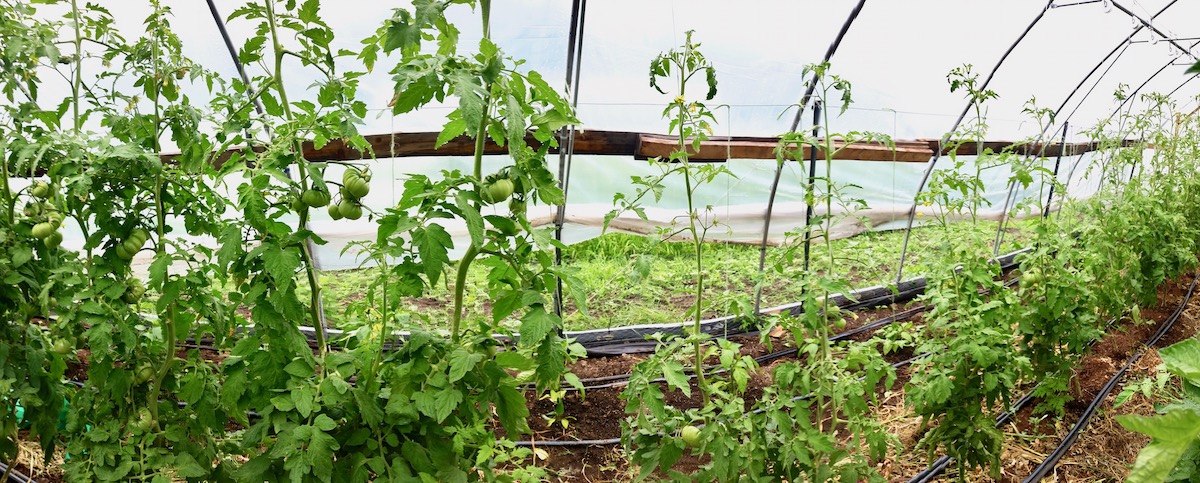
Features
Research
Organic Perspective
Organic production
Highlights from 2019 farmer-led research projects
A look at highlights from the Farmer-Led Research Program’s projects in organic vegetable production.
February 18, 2020 By Sarah Hargreaves, research director at EFAO

In 2016, the Ecological Farmers Association of Ontario (EFAO) launched its Farmer-Led Research Program. A first of its kind in Canada, the goal of the program is to help member-farmers combine their curiosity with scientific rigour to answer their most challenging on-farm questions. Since then, more than 50 different farmers have received funding to conduct research for their farms. Here are some highlights in the area of organic vegetable production. You can read project reports from all trials at efao.ca/research-library.
Project: What are the best fall lettuce varieties for southern Ontario?
Angie Koch (Fertile Ground Farm), Joanna Kowalczyk (Table Community Farm), Lise-Anne Léveilé and David Mazur- Goulet (BeetBox Cooperative Farm), Hilary Moore (Maplelane Farm), Leslie Moskovits (Cedar Down Farm), Harold Saunders (Saunders Family Farm) and Ann Slater (Ann Slater Organics)
Why they were curious
The fall slot for lettuce is challenging because lettuce has to handle both the heat and dryness of summer and the cold and wet of fall.
What they compared
In consultation with Johnny’s, High Mowing and Fedco seed companies (who also generously donated the seed), the growers selected 11 lettuce varieties. Each grower chose a subset and committed to two replicates of each variety in their last two plantings. They compared: Adriana, Winter Wonderland, Speckled Amish, Magenta, Ruby Sky, Newham, Green Star, Spretnak, Aerostar, Starfighter and Lovelock.
What they found
For various reasons the group was unable to collect as much data as they had hoped, so conclusions are limited to “overall best and worst.”
Overall, Magenta and Ruby Sky were the best performing varieties in 2019. These varieties had high overall and flavour ranking, good germination and were rated “the best” by multiple growers. Adriana was one of the lowest ranking varieties, was rated “the worst” by multiple growers and was one of two varieties to show signs of disease.
Moving forward
The growers would like more detailed information on germination and frost tolerance. They are planning to repeat the trial but a more limited selection of varieties, limiting to one to two market classes, for a more complete and robust dataset.
Project: Do grafted tomatoes pay off in high tunnels in Ontario?
Eric Barnhorst (Eva Mae Farm), Jenny Cook (Knuckle Down Farm), Sarah Judd (Meadow Lynn Market) and Nathan Klassen (Nith Valley Organics)
Why they were curious
Specialized tomato rootstock are used in greenhouses to confer resistance to soilborne disease, provide improved longevity and total marketable yield. The question remains, however, if grafting is worth it for high tunnels.
What they compared
Four organic growers worked together to compare replicate pairs of grafted and ungrafted tomatoes for a total of 13 replicate comparisons.
Eric Barnhorst (Eva Mae Farm) and Nathan Klassen (Nith Valley Organics) produced and grew grafted and ungrafted seedlings for the group. In total, they used two rootstock varieties (Estamino, 11 comparisons; Maxifort, two comparisons) and seven scion varieties (Margold (F1), Tomimaru Muchoo (F1), Marbonne (F1), Arbason (F1), Caiman (F1), Moskvich (heirloom) Black Prince (heirloom).
For each harvest date, the growers recorded harvestable yield by weight from each section. They also recorded observations on plant health and estimated cost of production.
What they found
Grafted plants had a yield advantage: Grafting did not consistently extend production length, but grafted tomatoes produced more marketable tomatoes than the ungrafted plants (P<0.007). The exception to this was Caiman, which had the lowest yield advantage on Maxifort and no yield advantage on Estamino – while the other 10 comparisons for Estamino showed greater yield. This may be because Caiman already has a good disease package and good overall vigour.
Grafted plants were economically viable: Eric estimated grafted tomatoes cost around $5 more per seedling to produce. Even with the extra cost, grafted tomatoes had higher average net returns. The degree of economic benefit varied by farm and depended on the specific yield benefit.
Grafted plants were healthier and produced higher quality fruit: For plant health, the grafted plants were consistently larger, more robust and produced higher quality fruit. Grafted plants were also more disease resistant.
Print this page